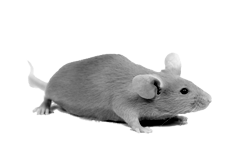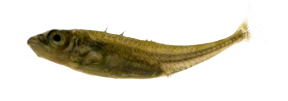publications
8. Chan, Y.F. Parallel evolution: hearing echoes. Heredity (News & Commentary). Solicited.
7. Chan, Y.F., Jones, F.C., McConnell, E., Bryk, J., Bünger, L., Tautz, D. Parallel selection mapping using artificially selected mice reveals bodyweight control genes. Nature (Letter). In review.
- Multiple artificially selected mouse lines
- Application of parallel selection mapping onto a classical complex trait, body weight
- Sub-megabase resolution of genes controlling body weight
- Detection of multi-locus signatures of selective sweeps in a time-series long-term selection population
- Prediction and validation of body weight in unrelated mouse dataset
- Fine-mapping of two body weight QTLs and identification of candidate genes GPR133 and Prlhr
- Detection of reduced heterozygosity in island populations of large wild mice
- Co-localization with genes affecting human heights in human genome-wide association studies
6. Jones, F.C.*, Grabherr, M.G.*, Chan, Y.F.*, Russell, P.*, Mauceli, E., Johnson, E., Pirun, M., Zody, M.C., White, S., Birney, E., Searle, S., Schmutz, J., Grimwood, J., Dickson, M.C., Myers, R.M., Miller, C.T., Summers, B.R., Knecht, A.K., Brady, S.D., Zhang, H., Pollen, A.A., Howes, T., Amemiya, C., Broad Institute Genome Sequencing Platform and Whole Genome Assembly Team, Lander, E.S., Di Palma, F., Lindblad-Toh, K., Kingsley, D.M. The genomic basis of adaptive evolution in threespine sticklebacks. Nature (Article). In final revision. (*co-first authorship).
- High quality stickleback genome assembly
- Ecological application of parallel selection mapping, using 10 pairs of marine-freshwater population pairs (especially hybrid zones) for mapping
- 21 next generation re-sequenced genome
- Kilobase resolution mapping of 81 regions showing parallel adaptation
- Development of method, “data-driven clustering”, which uses the data to generate population-level groupings and can propose novel ecological hypothesis
- Investigation into chromosome inversions and its relationship to adaptation
- Using a natural dataset to test the relative proportion of regulatory vs. coding changes (regulatory changes seem more prevalent)
- Investigation into the River Tyne hybrid zone to test the relative relationship between local and global adaptation
5. Jones, F.C., Chan, Y.F., Schmutz, J., Grimwood, J., Brady, S.D., Southwick, A.M., Absher, D.M., Myers, R.M., Reimchen, T.E., Deagle, B.E., Schluter, D., Kingsley, D.M. A genome-wide genotyping array reveals patterns of global and repeated species-pair divergence in sticklebacks.Current Biology. Manuscript accepted.
- Description of the stickleback SNP genotyping platform (also found in Kitano et al. 2009 and Greenwood et al., 2011)
- Deeper population-level survey of marine-freshwater adaptive loci
- Investigation of the loci contributing to benthic-limnetic divergences
- Molecular evaluation of McPhail’s double-invasion hypothesis
4. Deagle, B.E., Jones, F.C., Chan, Y.F., Absher, D.M., Kingsley, D.M., Reimchen, T.E. 2011. Population genomics of parallel phenotypic evolution in stream-lake stickleback. Proceedings of the Royal Society B. doi: 10.1098/rspb.2011.1552.
3. Greenwood, A.K., Jones, F.C., Chan, Y.F., Brady, S.D., Absher, D.M., Grimwood, J., Schmutz, J., Myers, R.M., Kingsley, D.M., Peichel, C.L. 2011. The genetic basis of cryptic pigment patterns in juvenile threespine sticklebacks. Heredity. 107: 155-166. doi: 10.1038/hdy.2011.1. Published Online February 9, 2011.
2. Chan, Y.F., Villarreal G. Jr., Marks, M.E., Shapiro, M.D., Jones, F.C., Petrov, D.A., Dickson, M., Southwick, A.M., Absher, D.M., Grimwood, J., Schmutz, J., Myers, R.M., Jónsson, B., Schluter, D., Bell, M.A., Kingsley D.M. 2010. Adaptive evolution of pelvic reduction in sticklebacks by recurrent deletion of a Pitx1 enhancer, Science (Article). 327 (5963):302-5. Published Online December 10, 2009. PDF | Supplemental | Nature news feature by Chouard | Science commentary by Pennisi | faculty of 1000 | Origins Blog@Science | Pharyngula | NPR Science Friday MP3,Transcript | ScopeBlog@Stanford | GNXP Blog | Adaptive Complexity Blog | Evolução y Desenvolvimento Blog | Nature Journal Club Blog
- Direct demonstration of cis-regulatory effect at Pitx1
- Identification of the Pitx1 regulatory mutations from multiple natural populations
- Functional demonstration of the effect of these regulatory mutations
- Restoration of the pelvic spine in transgenic pelvic-reduced sticklebacks
- Implicating the role of de novo mutations in parallel evolution of pelvic reduction
- Detection of convergent selective sweeps in multiple independent pelvic-reduced populations
- Implication of a mutation mechanism that lead to such extensive parallelism
1. Kitano, J., Ross, J. A., Mori, S., Kume, M., Jones, F. C., Chan, Y.F., Absher, D.M., Grimwood, J., Schmutz, J., Myers R.M., Kingsley, D.M., Peichel, C.L. 2009. A role for neo-sex chromosomes in stickleback speciation, Nature (Article), 461 (7267):1079-83. Published Online Sep 27, 2009. PDFSupplemental Material


